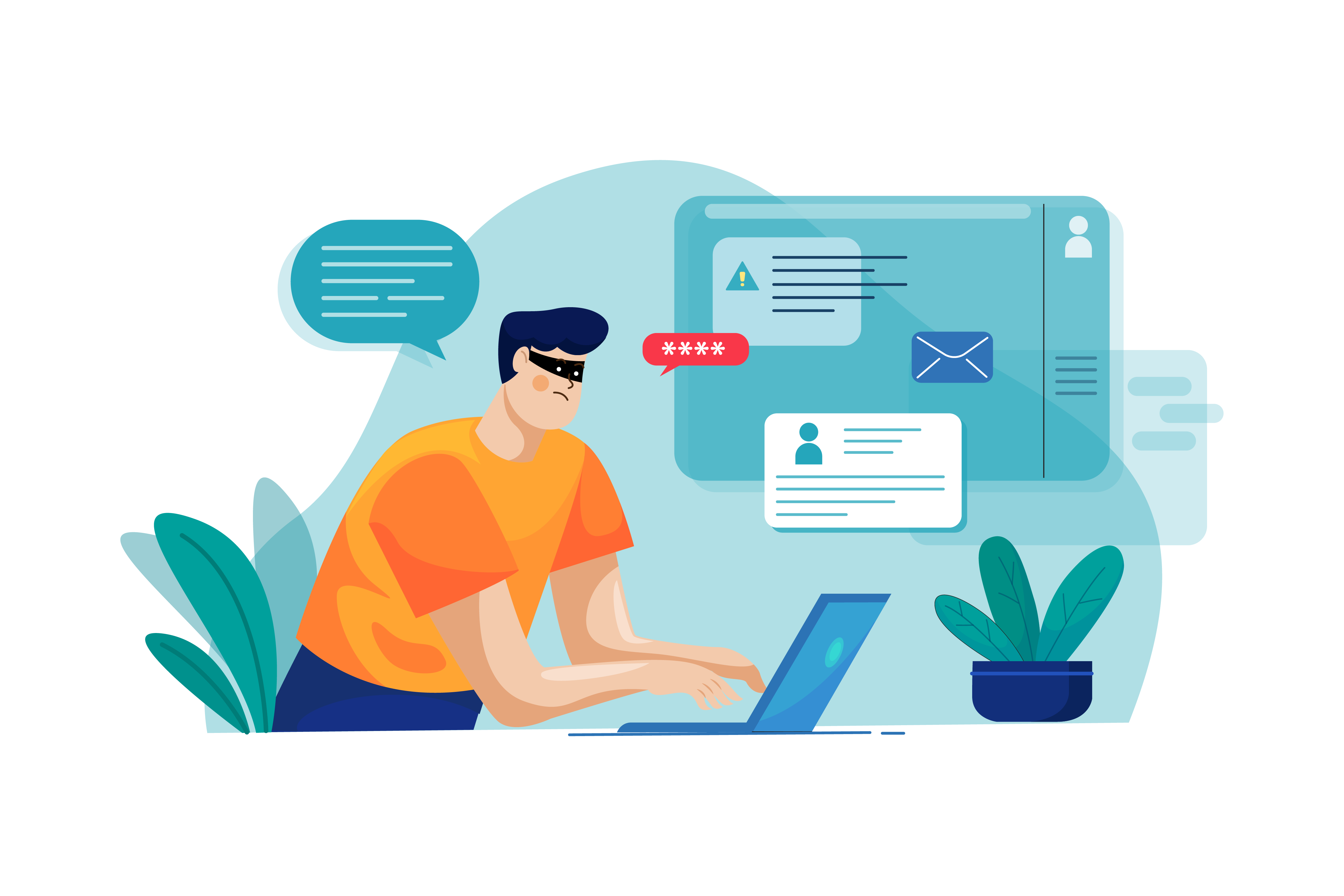- November 5, 2023
How To Find Out Who’s Behind a Fake Facebook?

Have you ever come across a fake Facebook account? It can be a cause for concern, especially if the person behind it is impersonating someone or spreading misinformation. While respecting privacy is important, there are legitimate reasons to want to expose the real identity behind a fake profile. In this article, we will explore different methods to uncover the truth and find out who’s behind a fake Facebook account.
Understanding the Need to Unmask Fake Facebook Accounts
A fake Facebook account can be created for various reasons. Some individuals use it to spam others or promote their own pages by acquiring fake likes. However, there are also malicious actors who use fake accounts to harass, spy on, or spread false information about others. In such cases, it becomes crucial to identify the person behind the account and take appropriate action.
Tracing the IP Address: An Effective Method
One of the most reliable ways to expose the real identity behind a fake Facebook account is by tracing its IP address. The IP address can reveal valuable information about the individual, including their location, device details, and internet service provider. By drawing connections to your friends or acquaintances, you may be able to deduce the actual person behind the fake profile.
To trace the IP address of a fake Facebook account, you can follow these steps:
Step 1: Utilize an IP Tracking Tool
Start by using a reliable IP tracking tool that can assist you in tracing the IP address of the fake Facebook account. There are several online tools available that can generate tracking links and record the IP address of anyone who interacts with them.
Step 2: Create a Tracking Link
Once you have selected an IP tracking tool, create a tracking link by entering any URL into the text field provided. This tracking link will redirect the user to that URL once they click on it, and their IP address will be logged in the tracking tool’s server.
Step 3: Shorten the Tracking Link
To make the tracking link less suspicious and prevent detection by Facebook’s security measures, it is advisable to shorten the URL. This will ensure that the link appears more innocuous when shared with the fake account.
Step 4: Engage the Fake Account User
Initiate casual conversations with the fake Facebook account user via Messenger or any other means available. Gain their trust by engaging in light conversation and establishing a connection with them.
Step 5: Send the Tracking Link
Once you have established a rapport with the fake account user, send them the shortened tracking link along with an attractive caption or pretext to encourage them to click on it. When they click on the link, their IP address will be recorded by the tracking tool.
Step 6: Analyze the Results
After the fake account user has clicked on the tracking link, you can access the IP tracking tool and enter the provided tracking code to view the results. The tool will display the user’s IP address, geographical location, and other relevant details. This information can help narrow down and expose their real identity.
Tracing a Fake Facebook Account: A Step-by-Step Guide
Tracing a fake Facebook account involves gathering comprehensive data about the account and systematically comparing it against potential suspects. Here is a step-by-step guide to help you in this process:
Step 1: Gather Information
Collect all available details about the fake Facebook account, including the IP address, geographical location, device used, internet service provider, browser type, and operating system. If you haven’t obtained this information yet, refer back to the previous section for guidance on tracing the IP address.
Step 2: Examine the Profile URL
Inspect the profile URL of the fake account to determine if it contains a Facebook username. A username can provide valuable clues, such as the last digits of a phone number or parts of an email address, which can help in connecting the fake account to your list of suspects.
Step 3: Utilize Facebook’s Account Recovery Page
Visit Facebook’s account recovery page and enter the username, if available. This page may reveal linked phone numbers or email addresses associated with the account. Analyzing these details can provide further insights connecting you to potential suspects.
Step 4: Employ an IP Logger for Suspects
If the account recovery page doesn’t yield results, consider using an IP logger to send tracking links to your list of suspects. By discreetly capturing their IP address information, you can compare it to the IP address and device data obtained from the fake Facebook profile.
Step 5: Compare and Narrow Down the Suspects
Compare the IP address and device details of each suspect with the information from the fake Facebook profile. Look for overlapping details, such as location, internet service provider, or device specifications. This process can help you pinpoint the creator of the fake account and reveal their real identity.
Can Law Enforcement Track Fake Facebook Accounts?
Law enforcement agencies have the capability to track fake Facebook accounts, particularly in cases that require immediate attention and investigation. However, the process of tracking a fake account involves several steps and often requires cooperation from various entities.
Reporting and Contacting Facebook
When a fake Facebook account is reported and law enforcement becomes involved, the first crucial step is to establish communication with Facebook. The police provide all necessary details about the account in question, prompting an internal investigation by Facebook’s security team.
Facebook’s Investigation Process: Facebook conducts a thorough analysis of the reported account, tracking the IP address used to create and access the account, identifying the devices involved, and even scrutinizing the user’s private messages for additional clues. The aim is to gather comprehensive data that can help trace the origin of the fake account.
Law Enforcement and Legal Procedures
Obtaining the IP address is an important step, but it is not the end of the investigation. Law enforcement agencies must obtain a court order, which is directed at the Internet Service Provider (ISP) connected to the traced IP address.
What Happens Next: With a court order in hand, the ISP is obligated to release information about the user associated with that particular IP address. This information typically includes the user’s billing address, revealing the individual behind the fake Facebook account.
The Challenge of Proxy Servers
Tracing a user who has utilized a proxy server to mask their IP address presents a notable challenge. Proxy servers act as intermediaries, hiding the user’s original IP address and actual location. This adds an extra layer of complexity to the investigation process.
Implications of Proxy Servers: Tracing a user who has employed a proxy server requires additional investigation and, in some cases, international cooperation depending on the location of the proxy server.
Protecting Yourself: Dealing with Impersonation on Facebook
Discovering a fake Facebook profile impersonating you can be distressing. It is important to take prompt action to address the situation. Here are steps you can take if you find yourself dealing with impersonation on Facebook:
Confirm the Account is Fake
Before taking any action, ensure that the account you’ve come across is indeed a fake profile and not someone who shares your name or resembles you.
Gather Evidence
Take screenshots of the fake profile, any messages exchanged, and note down the URL of the account. These pieces of evidence will be crucial when reporting the account to Facebook.
Report the Profile to Facebook
Utilize Facebook’s reporting feature to report the fake profile. Click on the three dots (…) on the profile page, select “Find support or report profile,” and follow the prompts. Choose the appropriate reason for reporting the account, such as “Pretending to Be Someone.” Facebook will then investigate your report.
Inform Your Network
Let your friends and family know about the fake account so they can avoid engaging with it. Post a status update or message them directly to raise awareness.
Mobilize Support
Encourage friends and acquaintances to report the fake account as well. The more reports Facebook receives, the quicker their response may be. Share the account link with close contacts and provide instructions on how to report it.
Review Account Security
A fake account could be a sign of a security breach. Change your passwords and review your account security settings. Enable two-factor authentication for an extra layer of protection.
Check for Multiple Fake Accounts
Impersonators may create multiple fake accounts across different platforms. Perform a quick search on other social media platforms to ensure there are no other impersonating profiles.
Document Incidents
If the situation escalates or leads to identity theft or defamation, keep all records and evidence. Consult with a legal professional if necessary.
Conclusion
Exposing the real identity behind a fake Facebook account can be challenging but not impossible. By utilizing methods such as tracing the IP address and comparing account details, it is possible to unmask the culprits and take appropriate action. Remember to prioritize your safety and report any suspicious activity to Facebook. By remaining vigilant and proactive, we can contribute to a safer online community.
Share it with your friends!
Explore
More
Ready to get started?
Harness the unmatched capabilities of ActionSprout to transform your Facebook strategy. Elevate engagement, captivate your audience, and achieve unparalleled results. Don’t wait – seize the opportunity.

